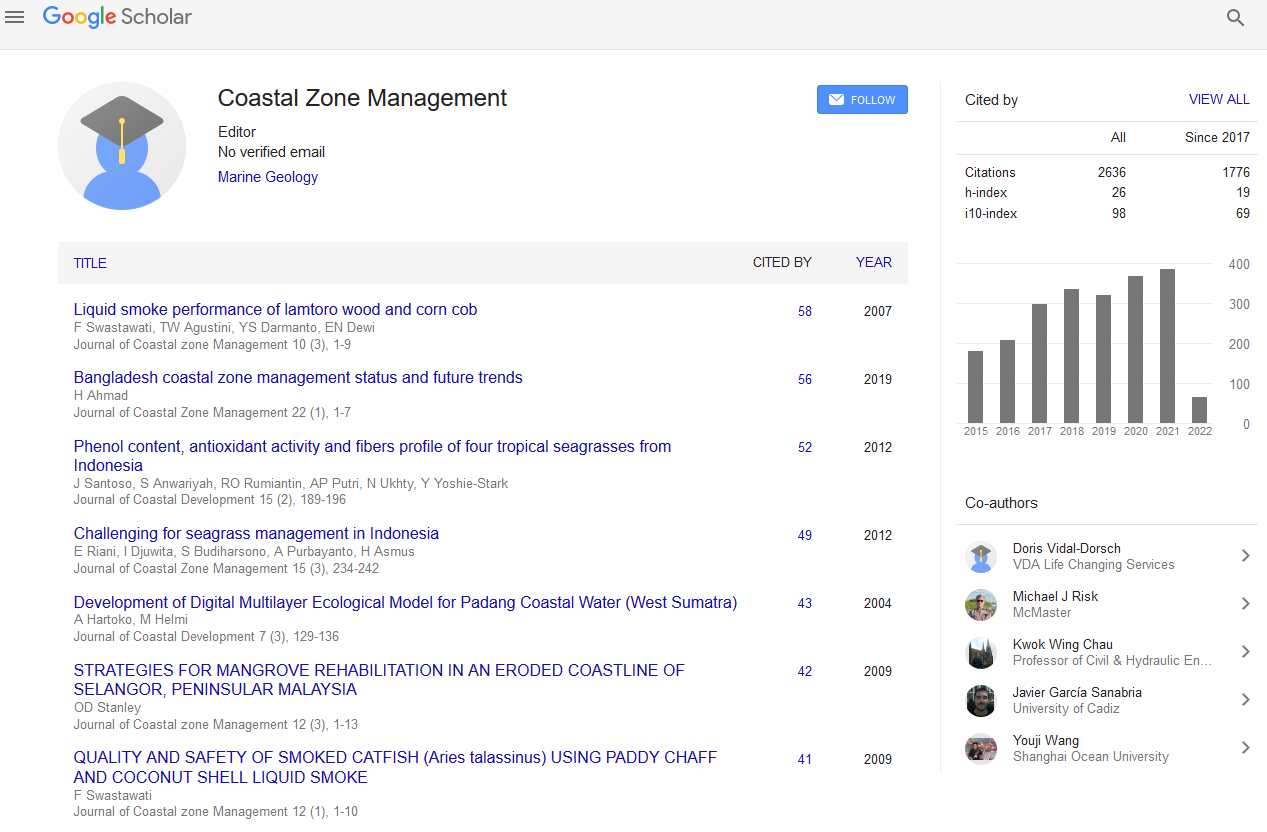Indexed In
- SafetyLit
- RefSeek
- Hamdard University
- EBSCO A-Z
- OCLC- WorldCat
- Publons
Useful Links
Share This Page
Journal Flyer

Open Access Journals
- Agri and Aquaculture
- Biochemistry
- Bioinformatics & Systems Biology
- Business & Management
- Chemistry
- Clinical Sciences
- Engineering
- Food & Nutrition
- General Science
- Genetics & Molecular Biology
- Immunology & Microbiology
- Medical Sciences
- Neuroscience & Psychology
- Nursing & Health Care
- Pharmaceutical Sciences
Abstract
Application of Time Domain Electromagnetic (Tdem) Methods for Mapping of Salt Fresh Water Intrusions and Evaluate The Porosity in Carbyn's Cove, Wandoor and Khurumedhera Beaches in South Andaman
Vignesh A, Ramanujam N, Swapan Kumar B and Rasool QA
Time Domain Electromagnetic (TDEM) methods are successfully used to delineate the geometry of different hydrogeological targets to determine porosity of saline and freshwater zones. TDEM can be used to determine both fluid resistivities (ρw) and bulk resistivities (ρ) which are required to calculate the porosity by applying Archie’s equation. By studying saline water intrusion near coastal zone, where ρw and ρ can be determined very accurately by applying TDEM method. From the literature review, it is revealed that the TDEM method is the most suitable geophysical technique for seawater intrusion. TDEM technique is very sensitive to high conductive (low resistivity) zones hence this technique can be applied to study the saltwater intrusion into the fresh water aquifers. Therefore, the aim of the presence study is to find out the porosity of saline water zone for the EM data generated with TDEM technique in the areas of Carbyn’s Cove, Khurumedhera and Wandoor beach of South Andaman The TDEM images shows the range of interface between saline water and fresh water at depth of 4 – 10 m from the shoreline to distance of 20 m in Carbyns cove beach, 7 – 18 m from 10m distance in Wandoor beach and 11 – 17 m from 30 m in Khurumedhera beach, indicating the varying amount of mixing of sea-water throughout the aquifer. The porosity of saltwater and freshwater shows that the low porosity indicates high salinity corresponds to salty brackish water with porous/ sandy or saturated clay and high porosity indicates low salinity corresponds to intermediate quality fresh water zone with Sand/gravel or minor clay. It is reasonably presumed from present field study, a close correspondence between the high resistivity zones that encompass with lower total dissolved solids concentration (fresh water) and lower resistivity region was incorporated with the higher amount of total dissolved solids concentration. TDEM soundings with Central Loop Technique appear to be a suitable tool to demarcate the transition zones between fresh water and salt water.

